

We may earn revenue from the products available on this page and participate in affiliate programs. Learn More ›
Americans love our lawns, and we would like to save some time maintaining those green spaces while also maintaining curb appeal. Grass lawns have a useful purpose in the landscape as play spaces and for their cooling effects. But a large lawn can take some time, water, and mowing to maintain. Plenty of folks are considering replacing some or all of their turf with lawn alternatives for a more sustainable landscape, especially in drought-prone areas.
If you’ve got the itch to ditch your grass, we’ve got plenty of grass replacement options other than artificial grass. Some of the most luxurious, green, and well-designed yards you’ve ever seen don’t have a single blade of grass, and are super easy to maintain.
Why You Should Consider Sustainable Lawn Alternatives
Depending on where you live, 30 percent to 50 percent of your household water use goes to turf and other landscaping. With drought patterns changing and water shortages a reality, even in American cities, we all could adopt some of the Southwest’s xeriscaping principles to do our part for the environment and our monthly water bills.
Just beware of a big misconception about xeriscaping: It means making landscapes more waterwise and appropriate for the local environment. It doesn’t mean pulling out all the grass and replacing it with gravel. But lawns that include too much grass, the wrong type of grass, or grass in a bad spot require more water and maintenance than is sustainable. When you think about lowering water usage and lawn care, start with these steps before perusing the easy-care lawn alternatives that follow.
Thinking about replacing your grass lawn? Here are small steps you can take to get started:
- Removing turf areas on slopes, where water runs off.
- Taking out narrow strips of grass, especially in “nuisance strips” near the sidewalk.
- Evaluating whether your turf is made of high-water-use grass mixes.
- Removing grass in corners of the lawn, or awkwardly shaped areas that are difficult to water and mow.
- Getting rid of grass along fences.
- Keeping appropriate use of grass lawns, like the areas where the kids play, helps cool patios and the house.
- Reducing the amount of grass on your property, especially where it doesn’t grow as well (like under trees).
Sustainable Alternatives to Grass Lawns
The best alternatives to grass lawns vary depending on how much lawn you want to replace, the climate in which you live, shade or other conditions in the yard, and personal preference. Get inspiration for your space from The these design ideas and plant selections—there’s sure to be ideas here that work for your situation.
1. Native Turf Grasses
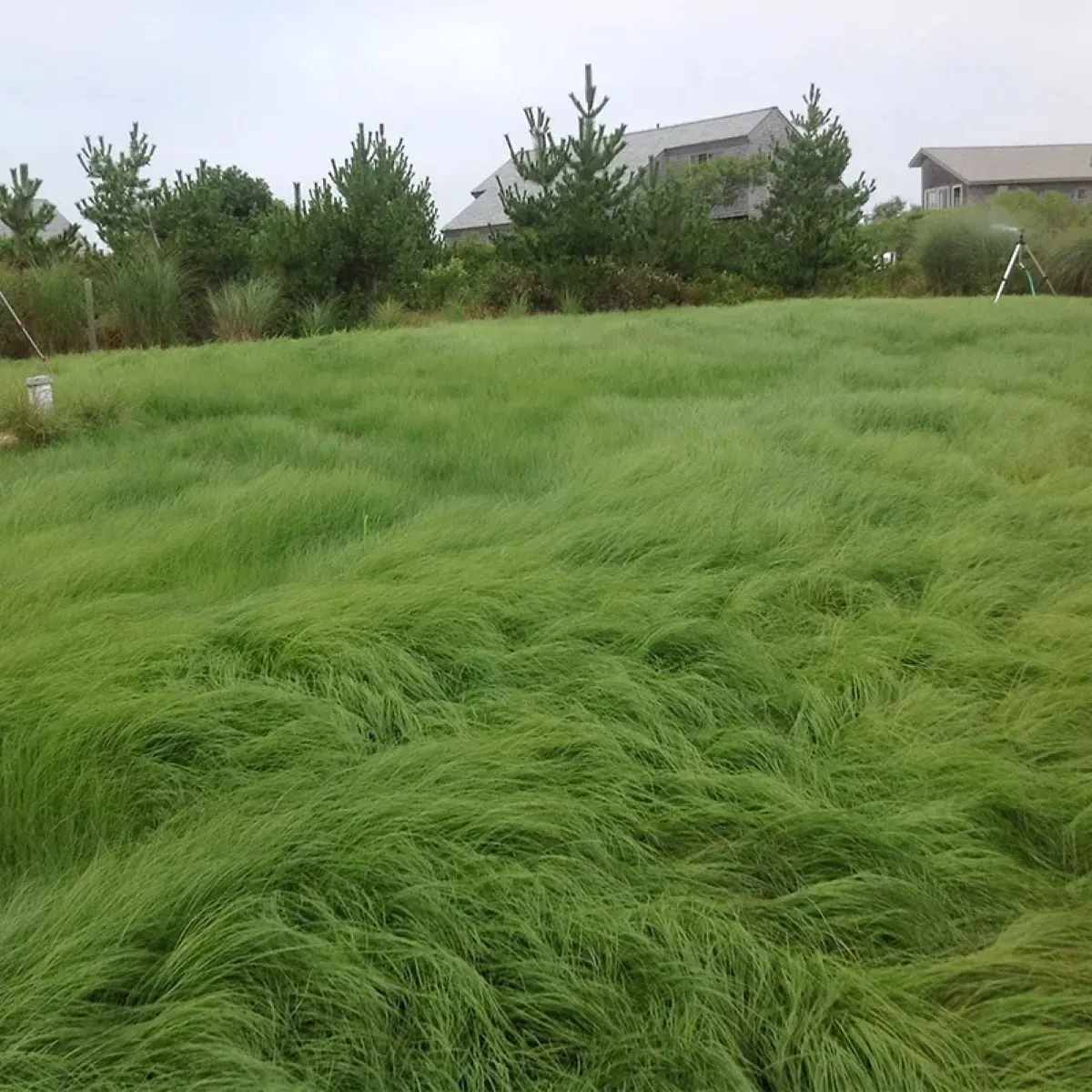
One of the reasons many lawns use so much water is that the planted grass is not the best fit for the region where it grows. When replacing a water-thirsty lawn, consider alternative native grasses. Drought-tolerant options include buffalo grass, Bermuda grass, bahiagrass, and blue grama. The Lady Bird Johnson Wildflower Center in Austin, Texas, developed a native turfgrass mixture for the dry regions of the Southwest called Habiturf, and found it looks and feels much like hybrid turf grasses.
Even though native grasses use less water, most do require some irrigation, mowing, and maintenance. Still, a grass adapted for your region and climate is the least amount of work and the most sustainable for any remaining turf areas of the landscape.
RELATED: 6 Pro Tips for Successful Container Gardening
2. Veronica
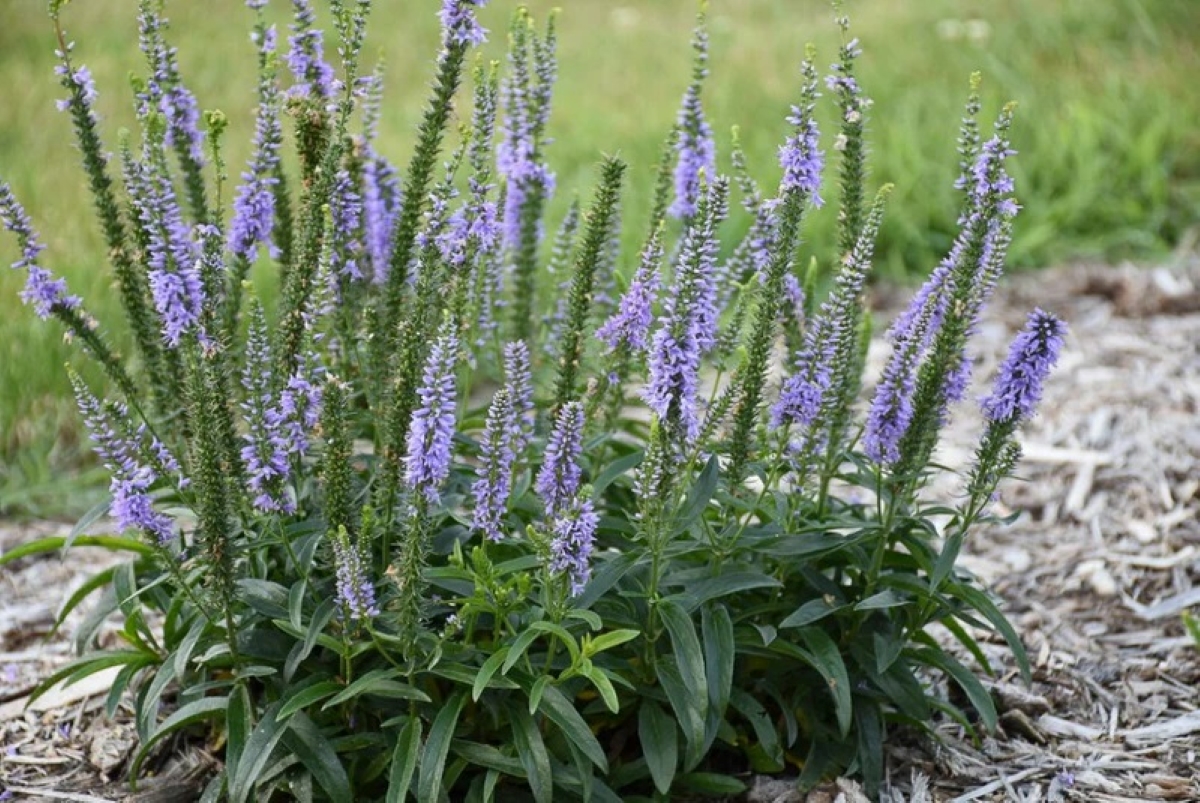
Veronica, or Speedwell, is a diverse, sturdy, and evergreen ground cover option for homeowners seeking grass replacement. Once the low-grower (1 to 2 inches high) spreads, it forms a dense cover of small, succulent-like leaves and late spring to early summer flowers. Veronica Snowmass (Blue-eyed Speedwell) loads up with tiny white-petaled flowers with blue eyes. Veronica Waterperry Blue grows a little larger (about 5 inches high) in zones 4 through 8 and its leaves have copper undertones, while the flowers have lavender petals and white eyes. Turkish speedwell has purplish-blue flowers and grows to nearly 2 inches tall.
Most types of Veronica can grow in full sun in zones 3 through 10 and are deer-resistant plants. They fill in well between flagstones or gaps, and need little to no maintenance once they’re established.
3. Gravel
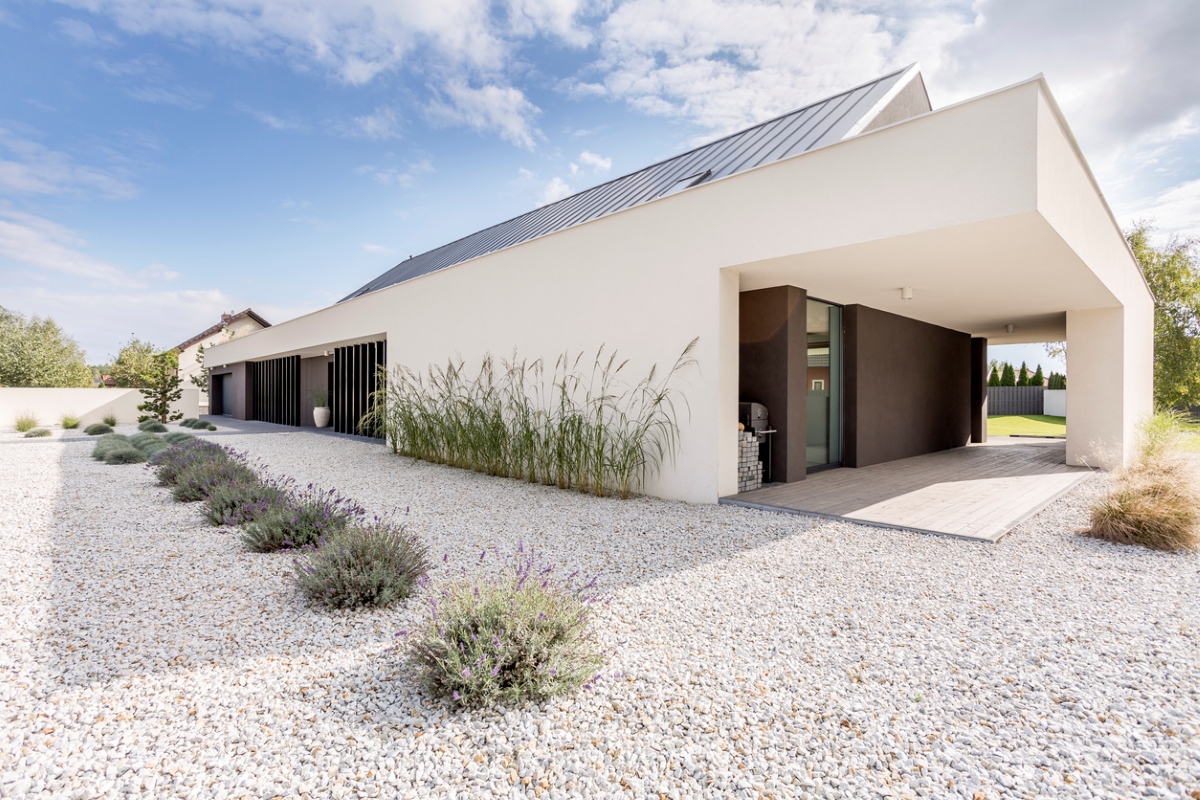
For a simple solution to neglected areas of the yard—like those strips of grass along the side of the house ,and shady areas—replace your grass with gravel. Gravel mulch is effective around plants that love heat and can tolerate low water. With some creativity, you can add color or patterns with crushed fine or pea gravel, creating a useful path at the same time.
Beware of using gravel in highly sunny spots, however, like near the west side of a house, because it can actually can increase temperatures around house walls. You might save on water but pay more to cool the home, or unwittingly make your favorite porch or patio unbearably hot in summer.
RELATED: 20 Easy Backyard Updates You Can Do in a Day
4. Raised Edible Gardens
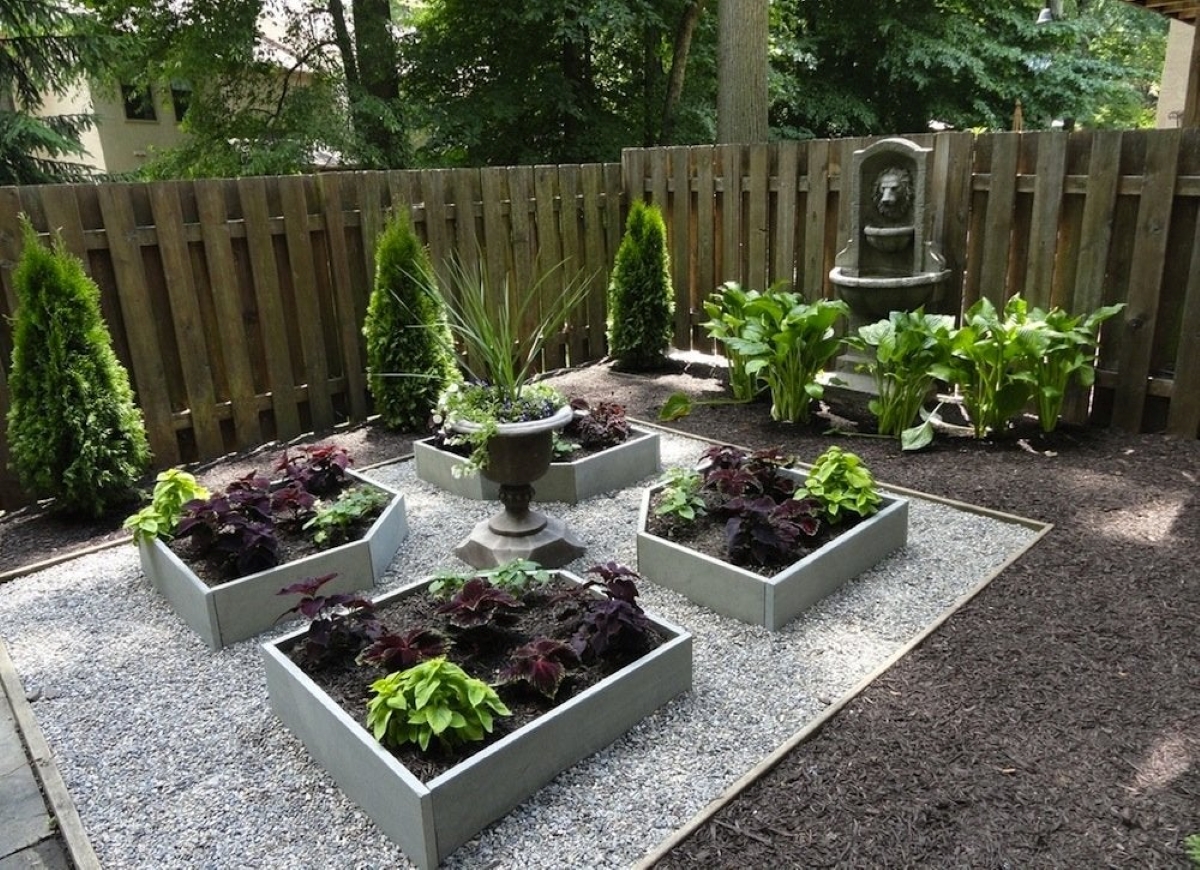
Converting an awkward area of the lawn into a vegetable and herb garden with raised planters provides a variety of benefits: You will likely save water on growing vegetables by filling the raised beds with soil that’s more suited to the plants than local soils offer. Instead of wasting water spraying the sidewalk next to a strangely shaped portion of grass, use soaker hoses or a simple drip irrigation system to water your vegetables and fill your plates.
Growing your own food can end up saving you money (and trips to the store), and you can’t get fresher, more locally grown veggies. Be sure to check local regulations regarding edible gardens, however, before ripping out the lawn and replacing it with raised beds, particularly if you’re situating the beds in your front yard.
5. Bugleweed
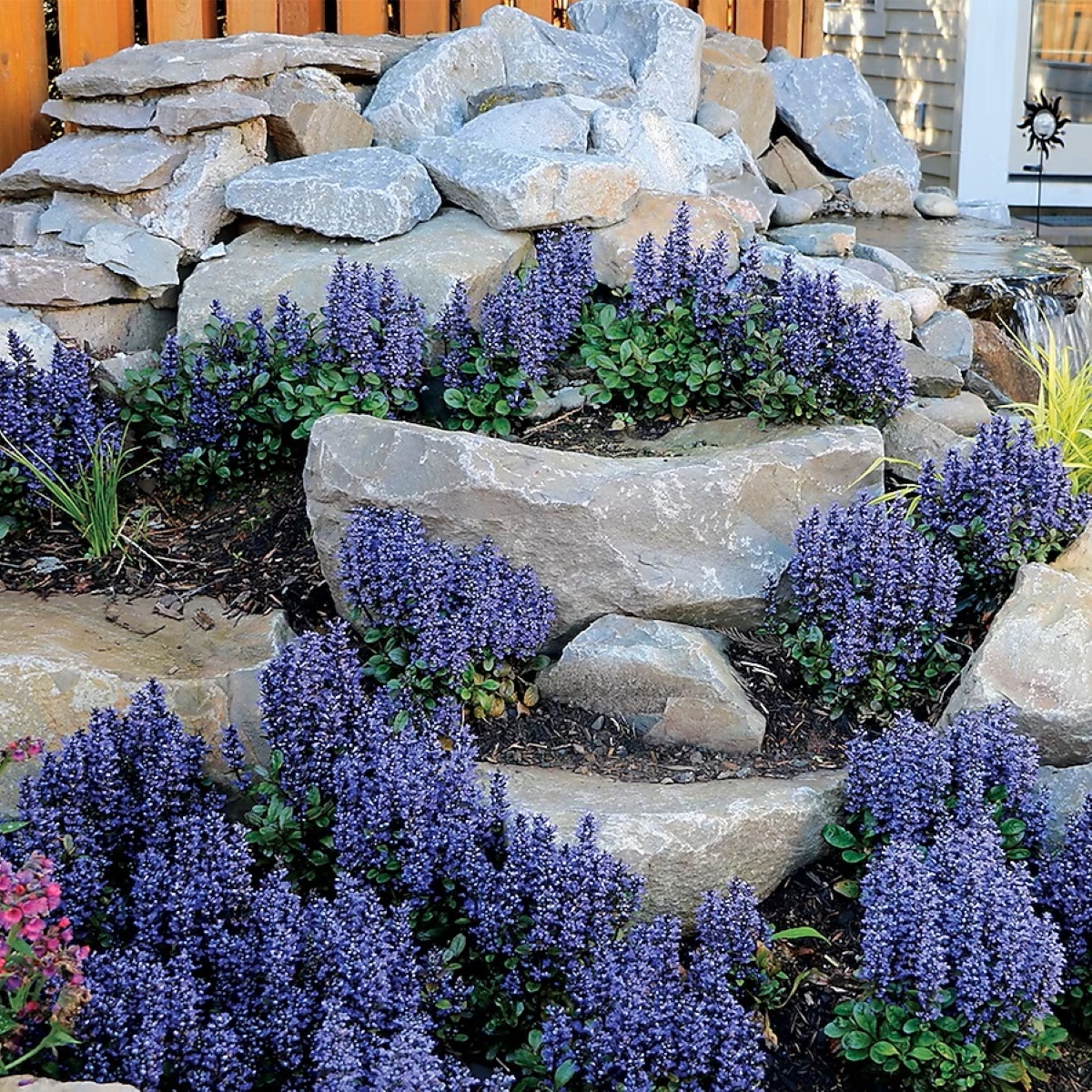
When it comes to grass replacement for shady areas of the landscape, it’s hard to beat bugleweed (Ajuga reptans). Its alternative name of Carpet Bugle gives a clue to how well this flowering ground cover spreads by runners. Amazingly, bugleweed can grow in spots with full sun, but it actually performs better in shade. Plant this evergreen to semi-evergreen creeping plant if you need a grass alternative that can handle changing sunlight conditions.
Its showy leaves (for example, gray-green in Silver Beauty, variegated with Toffee Chip, and deep red in Mahogany) look most attractive spilling over boulders in rock gardens. Keep its slightly acidic soil just moist and enjoy the colorful foliage and tiny bluish-purple flower stalks in mid to late spring.
6. Mulch
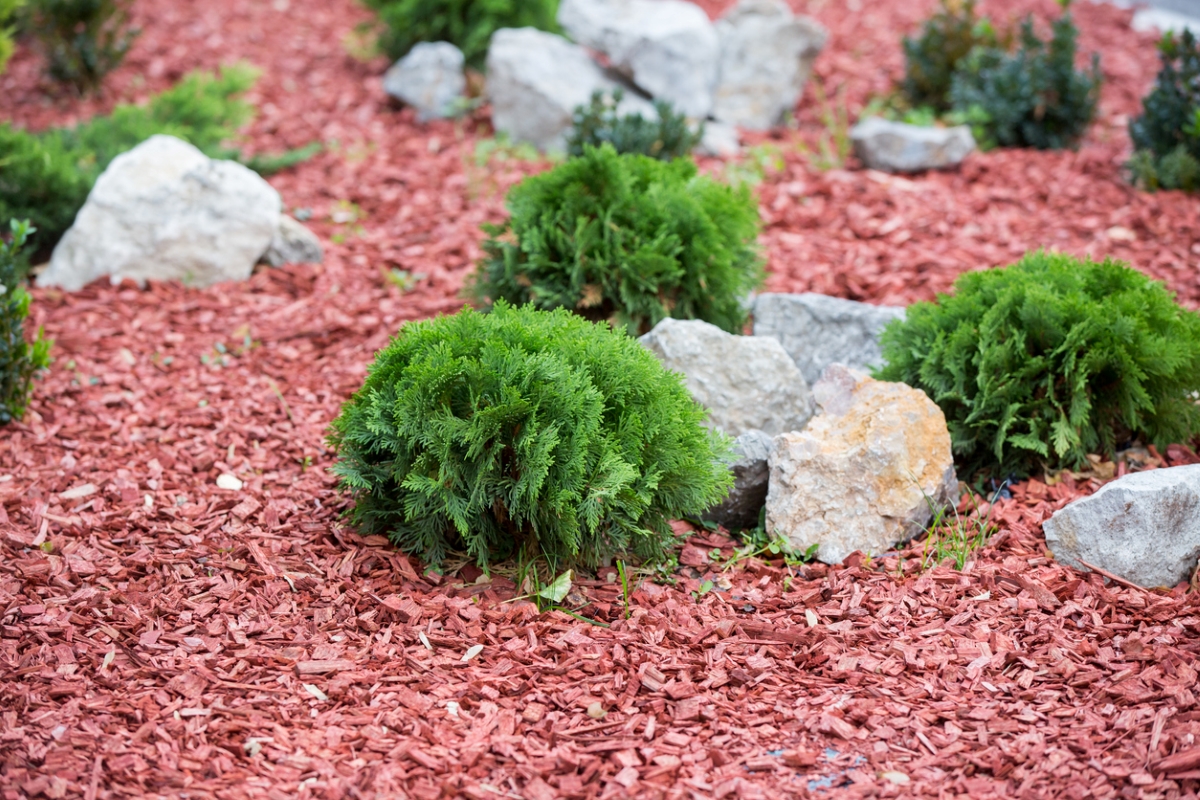
Organic mulches like cedar or pine bark chips can replace grass quite easily for a rustic ground cover. Plus, organic mulch eventually breaks down to improve soil health below. A 3- to 4-inch layer of mulch cuts down on weeds and reduces the amount of water needed by trees or other plants it surrounds. Before you lay the mulch down, place permeable landscaping cloth on the bare soil to prevent weeds from growing to the surface. Dog owners should avoid Cocoa mulch, because it can be lethal to pooches.
RELATED: How To: Make Mulch from Scratch
7. Culinary Herbs
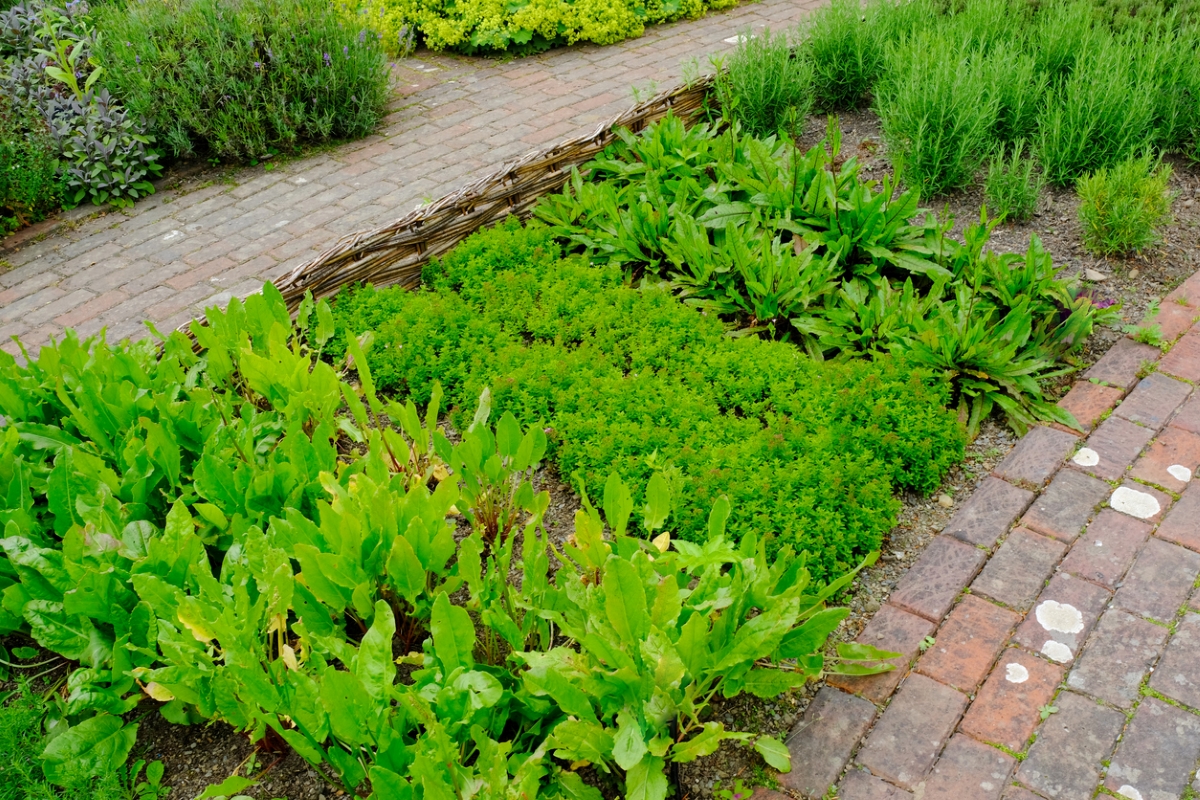
Home chefs, why not replace your grass with some ground covers that double as kitchen staples and pollinator magnets? Many of the plants in this list are herbs and can spread prolifically (sometimes too much, in the case of mint). Take time to research those that are edible and grow in your area for a lawn-turned-herb-garden. Greek oregano is cold-hardy to nearly zone 5A, spreads well, reaches at least 6 inches high, and tastes delicious on pizza. Sweet woodruff creates a dense mat of lightly scented leaves that become more aromatic when dried; it grows to about 6 to 12 inches high.
Another herb favorite for ground cover is Corsican mint, which grows almost at ground level and handles full sun to part shade in zones 6 through 9; its leaves create the flavor in crème de menthe. A German chamomile lawn will reach nearly 2 feet high and fill with daisy-like flowers. Even culinary thyme can spread to cover a bare spot and emit its unique fragrance. If left to flower, its tiny light purple blooms attract pollinators. Although culinary herbs might require some pruning or control, clipping stalks to use in dishes or mint juleps can make it all worthwhile.
RELATED: 15 Perennial Herbs to Grow for Years of Fresh Flavor, Pest Control, and Cleaning Supplies
8. Hardscaping
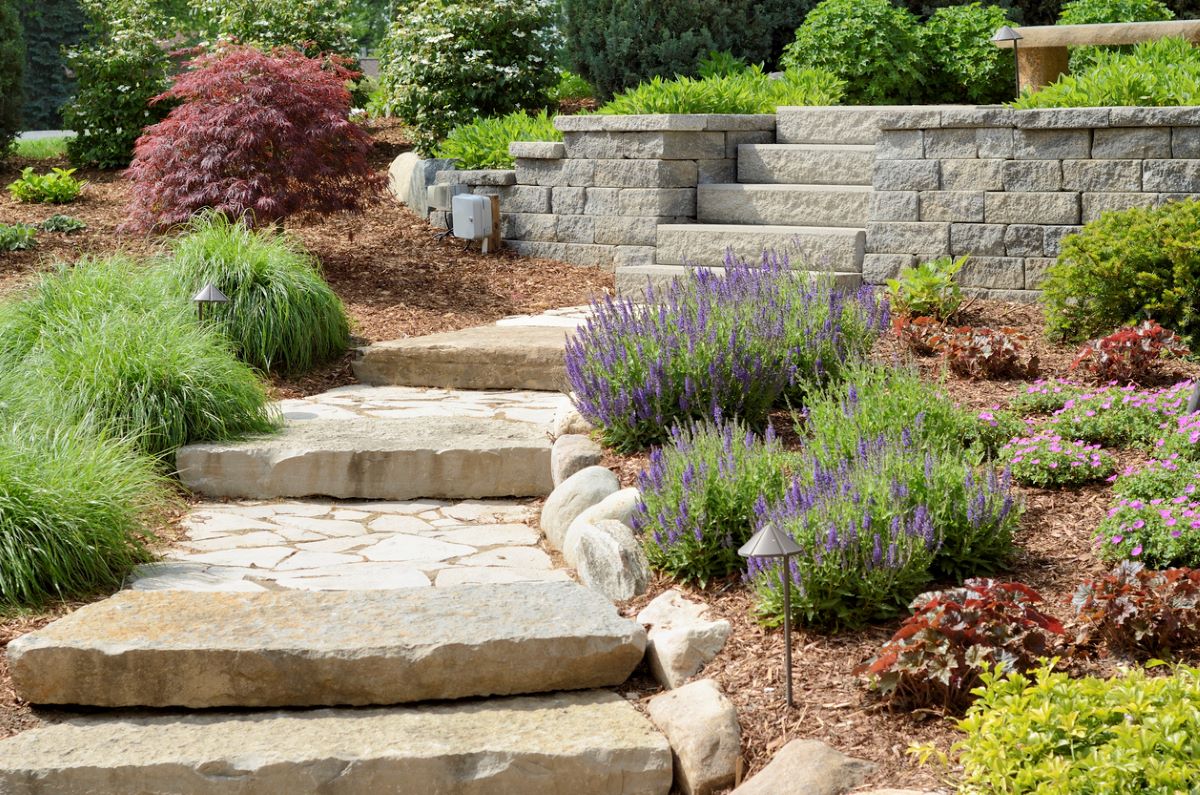
Tired of mowing? Turn your backyard into a hardscaped jungle with a lovely new patio, walkway, or other hardscaping project. Stamped concrete, patio pavers, or natural stone can create a stunning and functional space. Surround the perimeter with lush ornamental grasses, colorful flowers, or low-water natives. Or brighten the space with a few well-placed containers brimming with greenery. You won’t even miss that section of lawn.
RELATED: 10 Ways to Dress Up a Drab Concrete Patio
9. Creeping Thyme
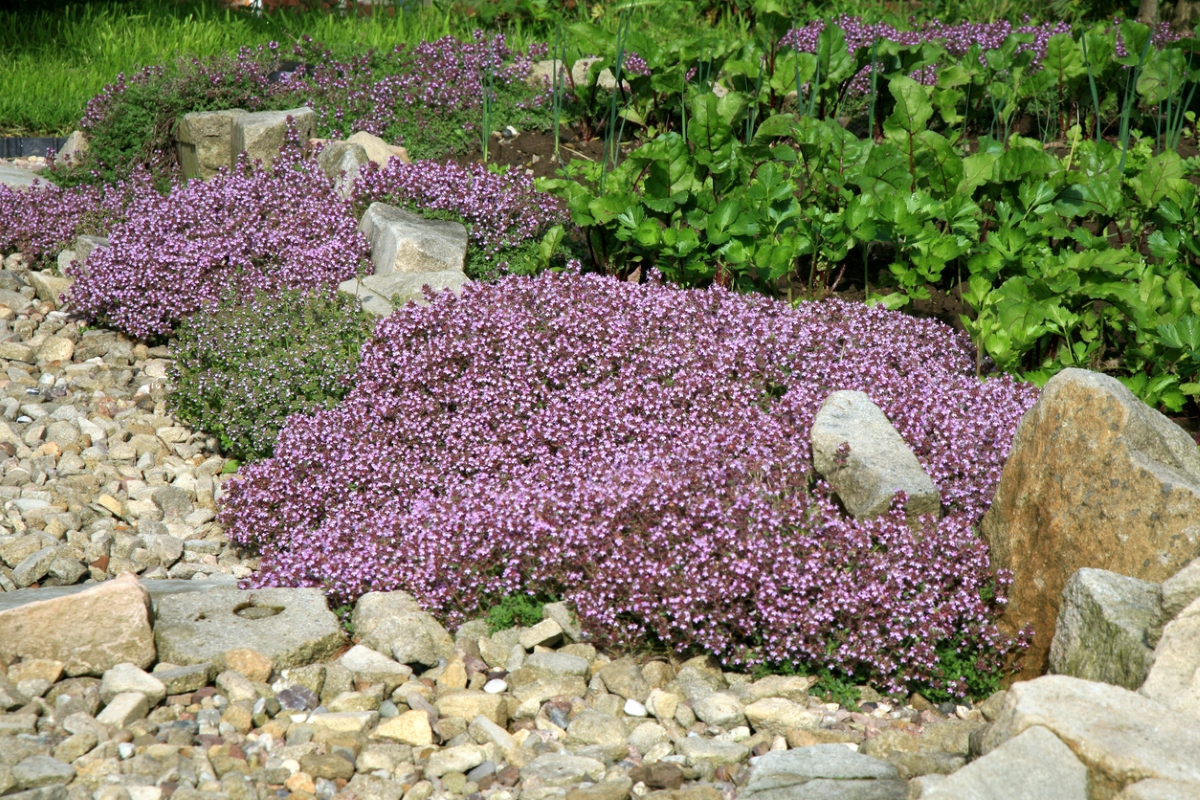
For some home gardeners, a property that’s full of rainbow of blooms is a crowning achievement, but for others, simplicity is perfection. If no-nonsense greenery is your idea of great design, replace the lawn with a low-growing perennial like creeping thyme or wooly thyme. Creeping varieties usually flower heavily with delicate white, purple, or pink flowers. Wooly thyme forms a dense mat of tiny gray-green leaves. Both fill in well between pavers or other strips. Like grass, these ground covers can stand up to foot traffic but with the added advantage of being mow-free.
RELATED: The Best Low-Maintenance Ground Cover Plants for Your Property
10. Rock Garden
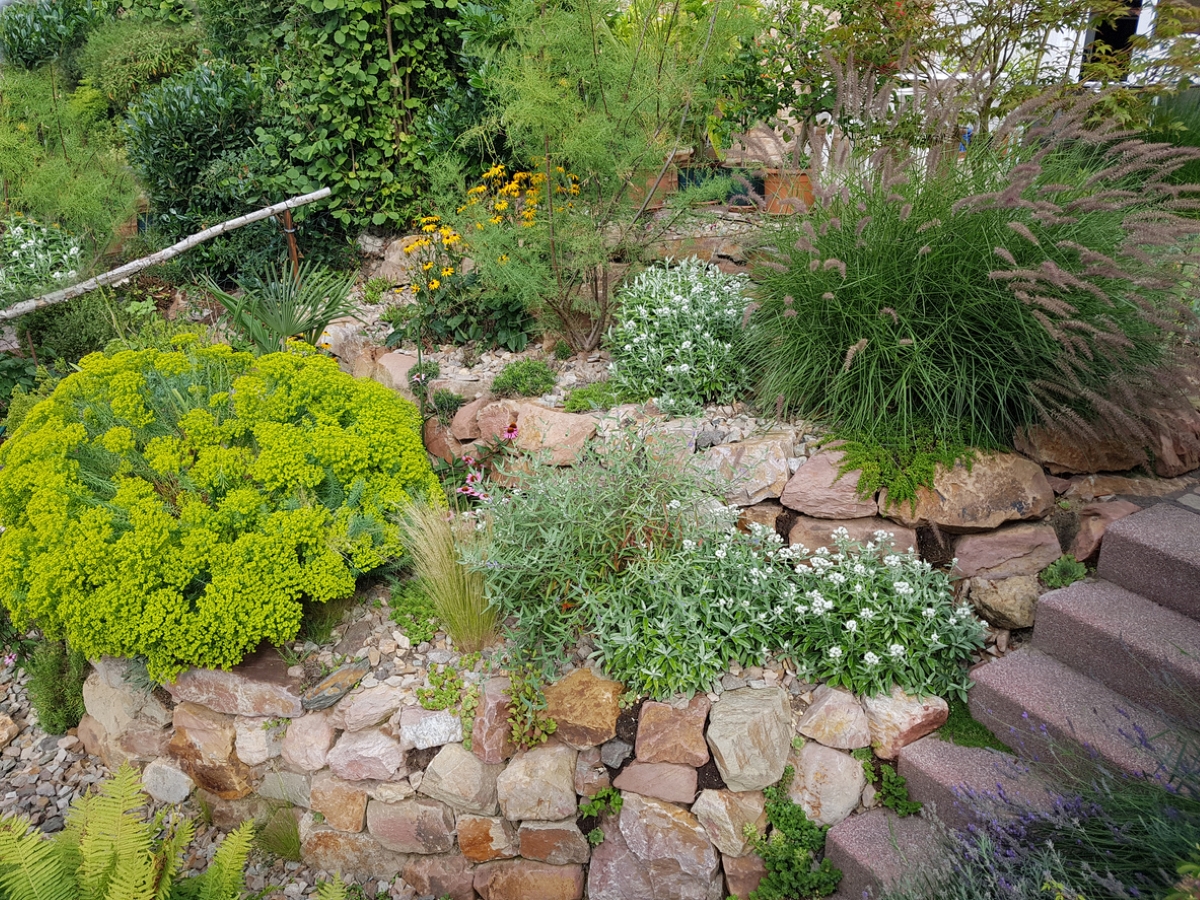
To achieve a mix of colors and textures, create a rock garden with stones and flowers. Choose native flowers for the easiest care. The rugged simplicity of the rocks will contrast nicely with the vibrant blooms, creating a one-of-a-kind backyard feature. Plus, once the flowers fade off in the winter, you’ll still enjoy the visual interest of the boulders scattered throughout your property.
RELATED: The 8 Best Places To Buy Plants Online
11. Walk-on Plants
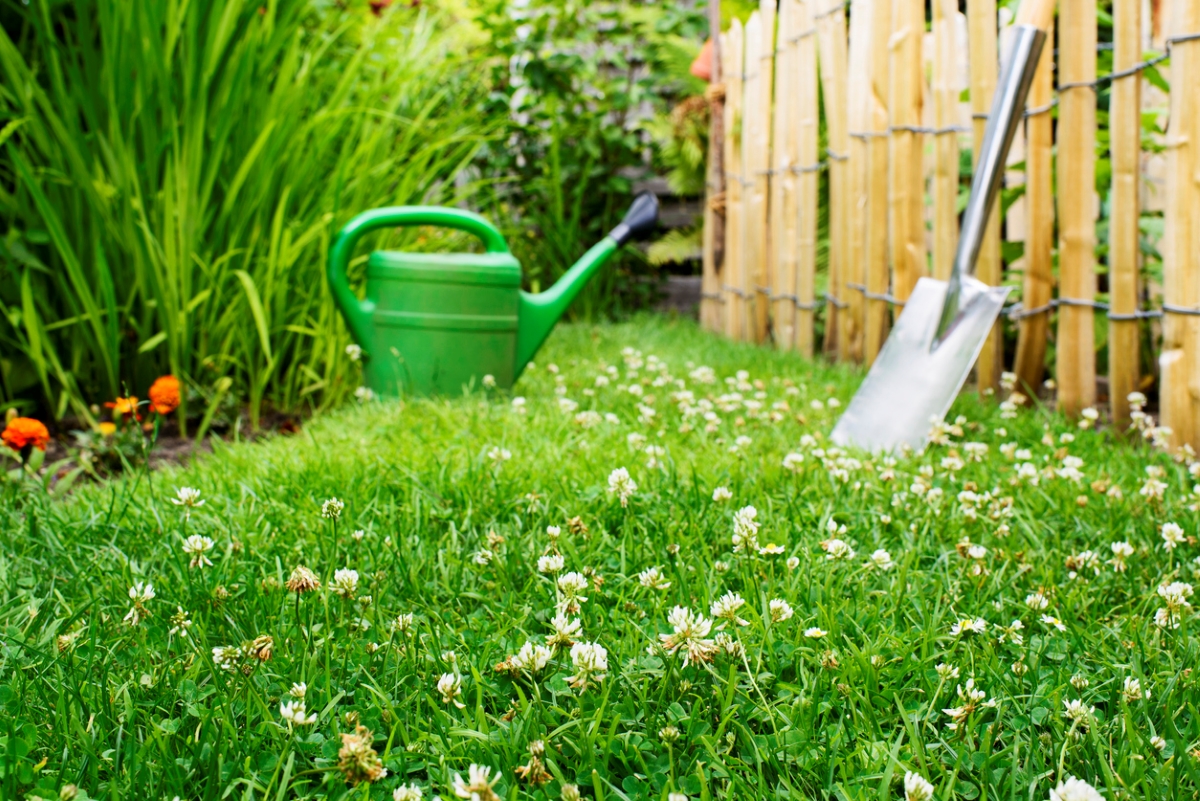
Like creeping thyme and other plants on this list, plenty of lesser-known low growers can handle foot traffic. Use these plants as grass alternatives in areas that get some—but not too much—foot traffic, like on the way to garden beds or between pavers or flagstones. Some nurseries separate “steppable” plants so you can easily find the best ones for your area.
A few examples of ground covers that tolerate some foot traffic are Shamrock Clover (Trifolium), which has two-toned green clover leaves and flowers in early summer in zones 4 through 9, and dwarf Mondo grass (also called monkey grass). Its evergreen tufts and small summer flowers need little maintenance and no mowing. It can grow in sun or part shade, like under trees, in zones 7 through 10. Blue Star Creeper, or Laurentia fluviatilis, thrives in zones 5 to 9 as an evergreen or semi-evergreen spreader less than an inch high and able to take some pounding from feet. Sky-blue flowers appear from spring through fall.
12. An Outdoor Living Space
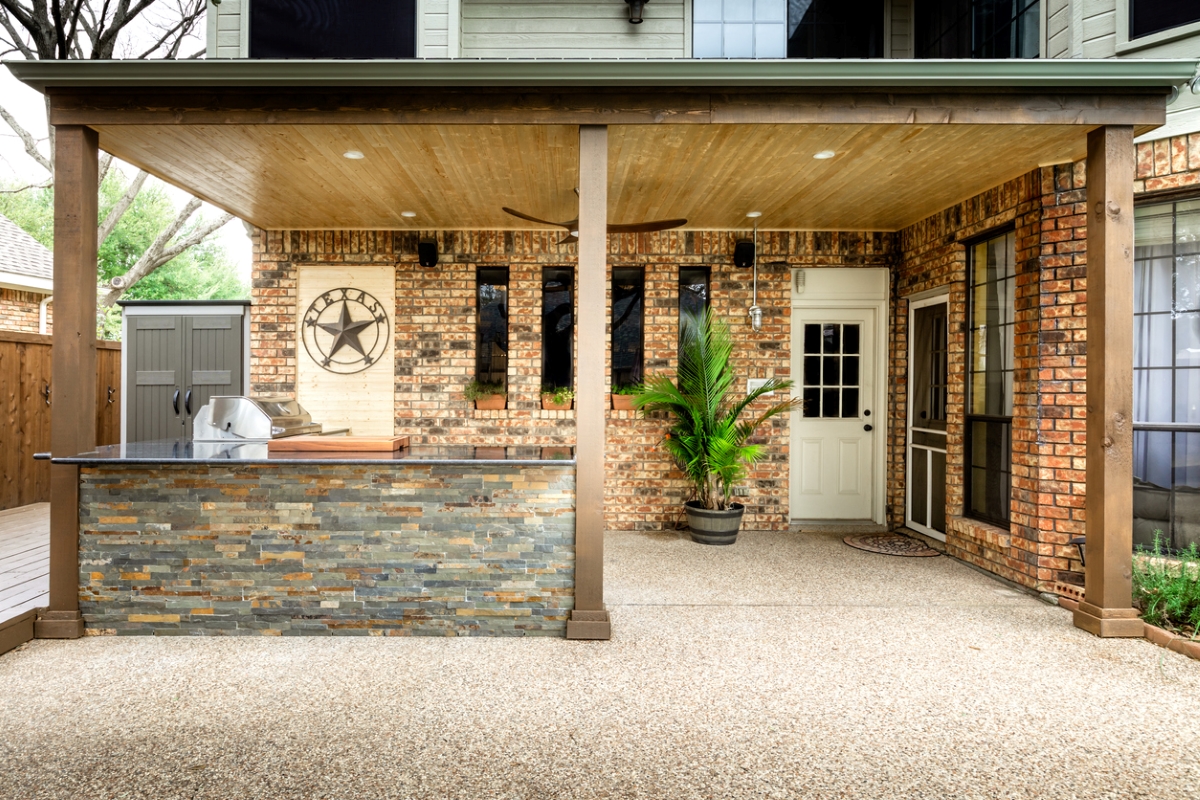
Expand your living space to the outdoors and replace some turf with living spaces that integrate outdoor furniture and appliances: Put some patio furniture together and make a second living room, build a dedicated fire pit, or install an outdoor kitchen. As the pandemic limited activities, a 2021 survey found that 90 percent of Americans with outdoor living spaces like decks, porches, and patios were using them more.
RELATED: 25 Ways to Upgrade Your Outdoor Living Space for Almost Nothing
13. Moss-like Spreaders
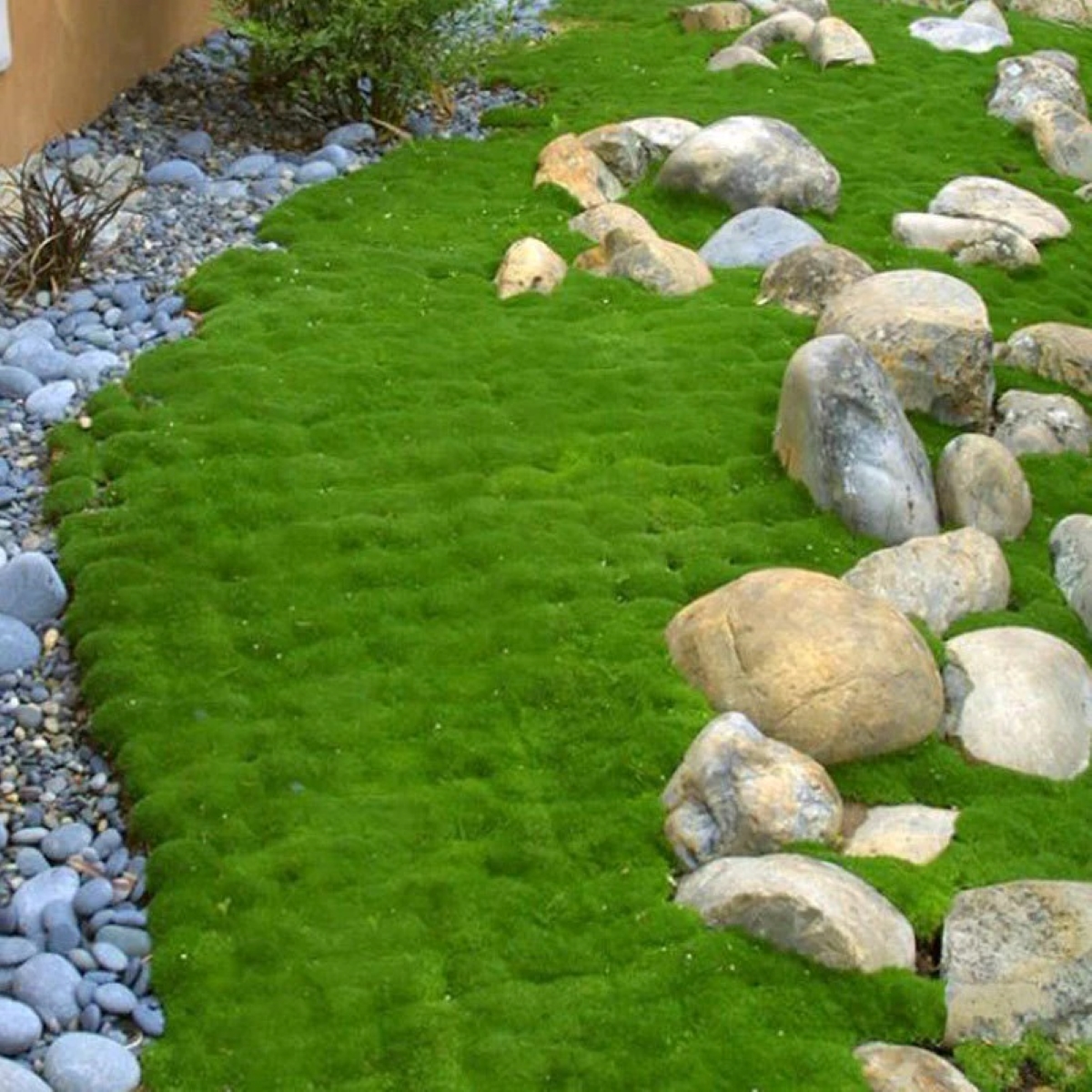
Homeowners who like turf’s “green carpet” look but do not like mowing can pull out grass and replace it with a carpet of moss-like ground cover; in return, they get a yard with easier care and less watering. Though true moss thrives in wet shade, these moss look-alikes are versatile and easy-care grass alternatives.
Irish moss (Sagina subulata) grows rapidly to form a dense, low mat of green to dark green foliage along the ground. It can produce tiny white flowers in spring to mid-summer in zones 4 to 8. For a dense neon-yellow carpet effect, try yellow Scotch moss (Sagina subulata ‘Aurea’), which grows in full sun or part shade in zones 4 through 8. These plants are not drought-tolerant, but are low-maintenance and rapidly growing alternatives to grass.
RELATED: 10 Plants You Can Grow Without Soil
14. A Water Feature
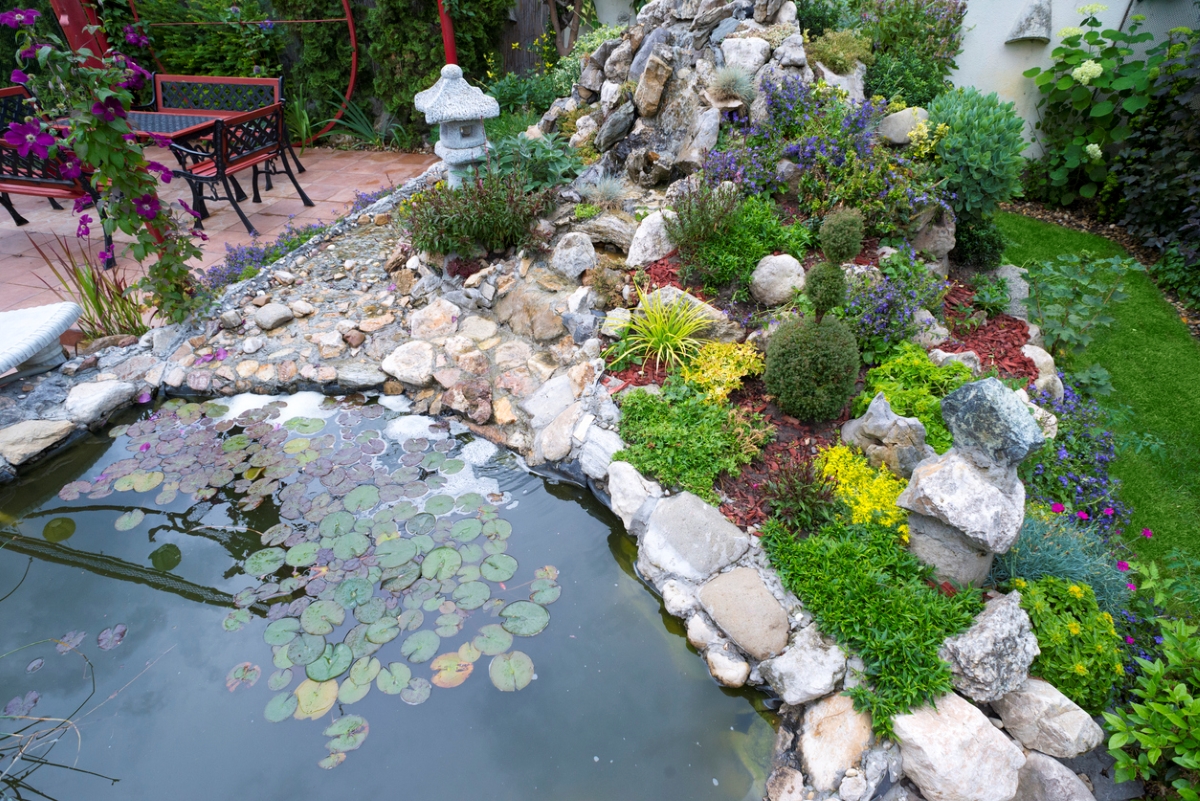
Water features are fairly easy to maintain, and they create a visual focal point in your garden. Consider replacing some of your grass with a fountain, pond, or super-sized bird bath. A water feature is not the most eco-friendly alternative to grass, especially in hot and dry areas, but bird baths and small fountains can offer focal points in a landscape and soothing white noise to block out sounds of traffic.
When done right, a water feature can attract birds and other wildlife to the yard. In desert areas, create a dry river bed that doubles as a director of runoff from a roof or high areas of the yard down to trees or other plants.
15. Ornamental Grasses
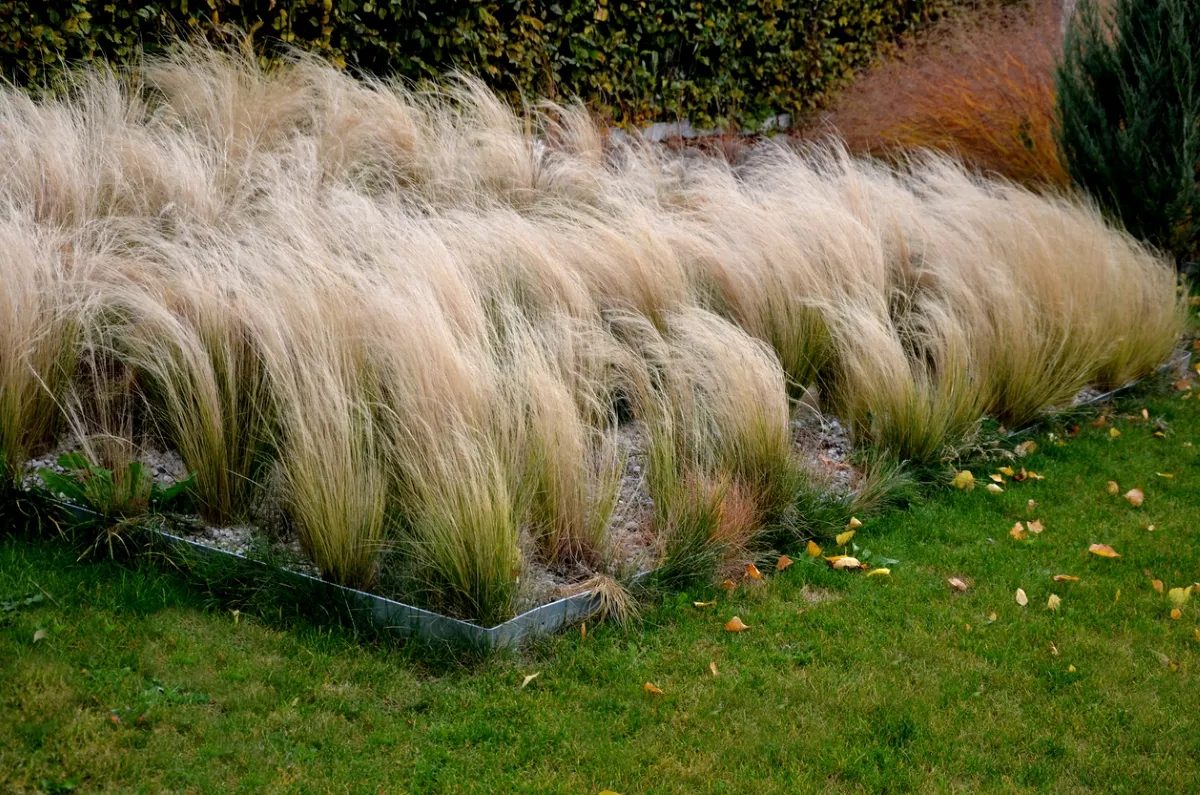
If you’re not ready to part with grass completely, make a show-stopping display with ornamental grasses. The long blades are a low-maintenance alternative to a traditional lawn, requiring only occasional trimming, but growing best in no-traffic areas or next to paths. Most are drought-tolerant, many are native, and they provide winter interest as their stems fade but “flowers” (seed stalks) remain to blow in the wind and feed birds as temperatures drop.
Although there are plenty of varieties to choose from at home and garden centers, select those with low-maintenance and low-water requirements that thrive in your area. The foliage of Little Bluestem turns from bluish-green in summer to reddish purple in fall in zones 3 through 8. Indian Grass is another low-water ornamental grass that grows to nearly 8 feet high with bronze seeds in fall to feed songbirds.
RELATED: The 22 Best Ornamental Grasses for Adding Drama to Your Property
16. Appropriate Shade Trees
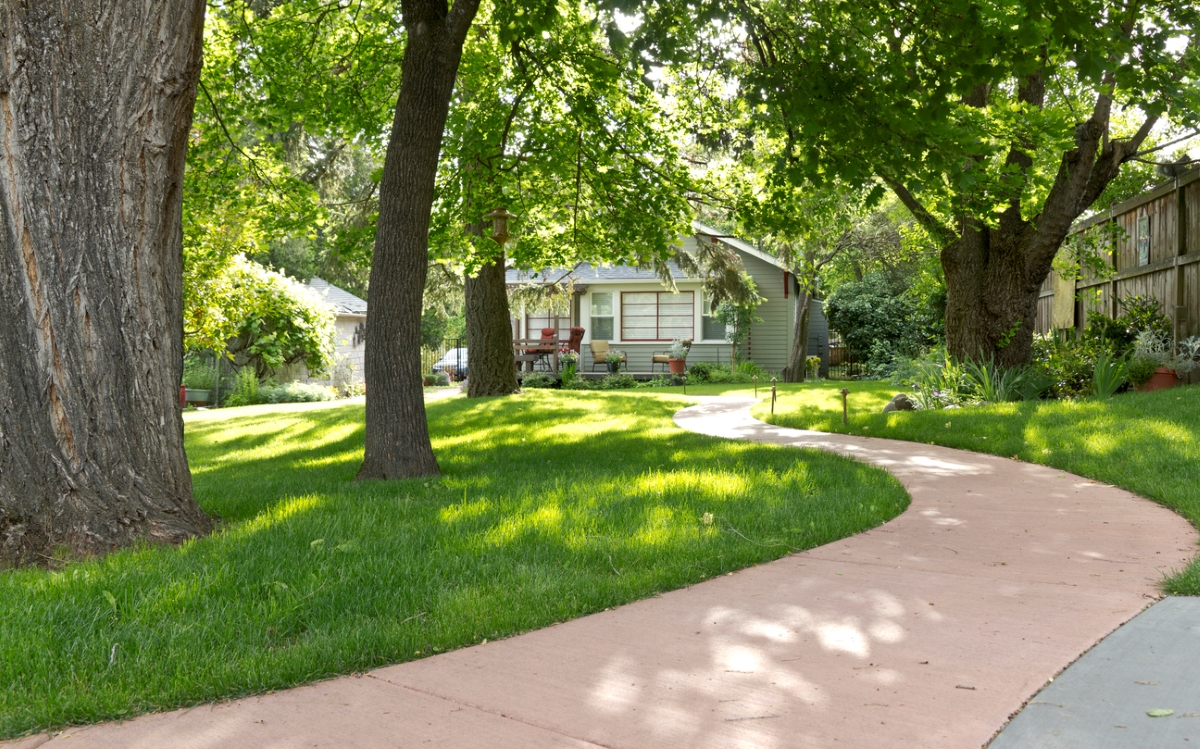
One of the drawbacks of removing a lawn is that it also takes away cooling effects on the yard, and even the house. Offset it with a vertical oasis of trees, which also offer privacy, shade, wind breaks, and even air purification. The sustainable path here, however, is to choose trees that are local to your area and that will require the least amount of water. Drought-tolerant Northern Red Oak grows quickly, offers fall color, and grows in zones 3 through 8. Scots Pine can handle low water after the first year, is evergreen, and grows in zones 3 through 7.
Note that trees can take years to mature to their full height. If you convert your grass lawn to gravel or hardscaping, avoid placing plastic weed barriers around a tree, which can deplete roots of oxygen and water. Be sure to choose a permeable woven fabric (and even permeable pavers) if you place these materials on the ground below the tree’s expected canopy size.
RELATED: 19 Ideas for Better Backyard Privacy
17. Native Wildflower Meadow
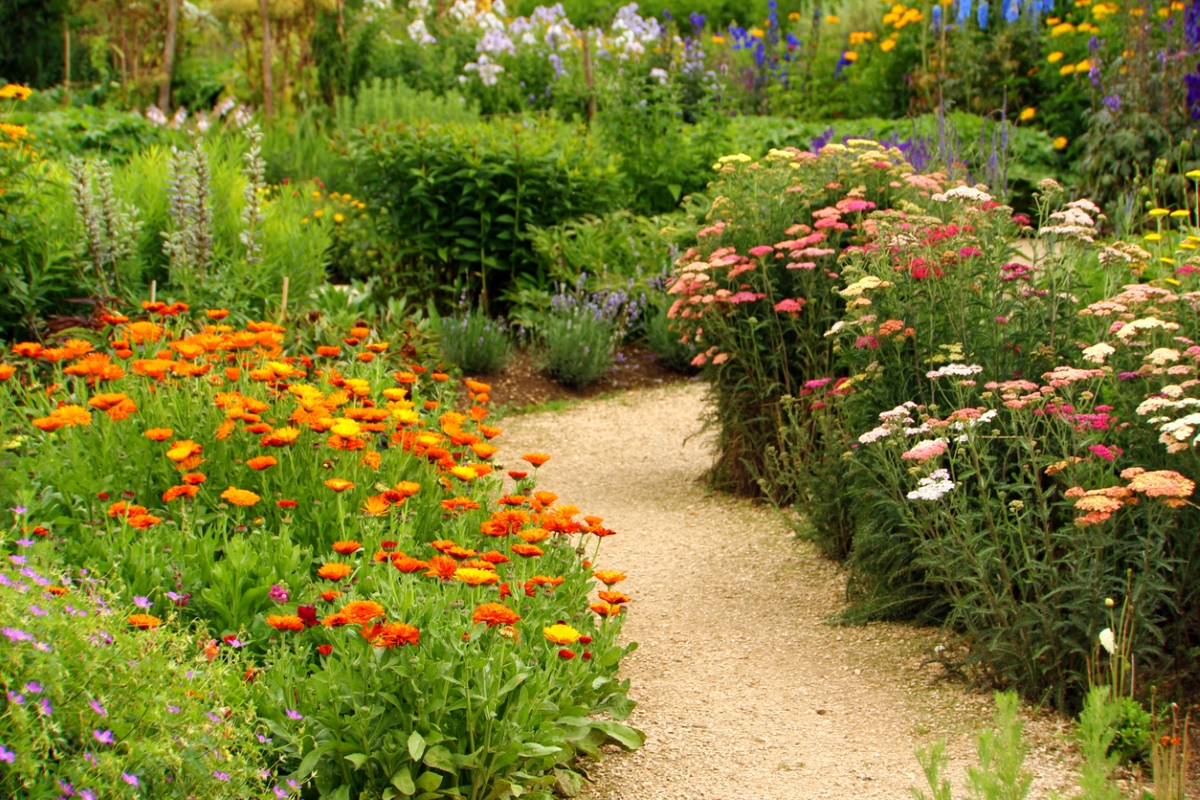
A native wildflower meadow can look lush and colorful, but can save some time and water over thirsty turf lawns. Try taking out a partial section of lawn, like the areas along fences or paths that are more difficult to mow, or along property lines and seed it with wildflowers. A mini-meadow provides a focal point for the landscape, a magnet for pollinators, plus some cut flowers to bring inside in summer.
This lawn alternative takes a little more work than some, especially upfront to prepare the former area of lawn to clear weeds and grass. Most seed mixes contain both annual and perennial flowers, and often will reseed year after year, cutting down on subsequent maintenance. And even though the wildflowers might require a little watering and upkeep, the result of that work is a natural habitat for birds and butterflies.
RELATED: 17 Types of Wildflowers Every Home Gardener Should Know
18. Container Garden
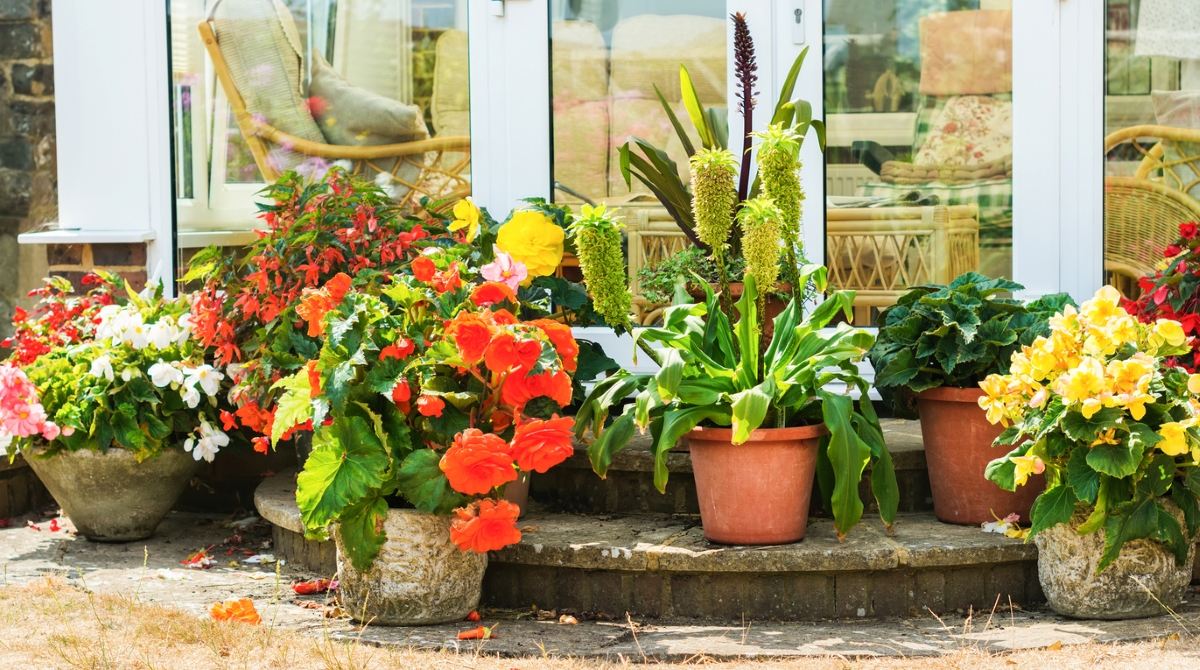
If you love growing flowers or food, trade in your lawn mower and for a simple spade and watering can. A container garden is a good alternative to a lawn in areas where conditions change as summer progresses. It’s easy to move a plastic pot in or out of shade. Although containers can dry out faster than garden beds, the growing area is confined and easy to water by hand, avoiding the waste of water evaporating from lawn sprinklers.
Position colorful planters throughout the yard for welcoming cheer and color, especially in areas where you already replaced turf with gravel or hardscaping.
